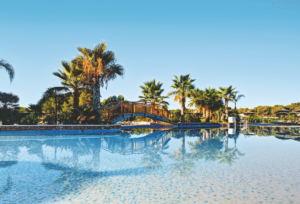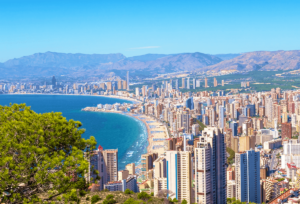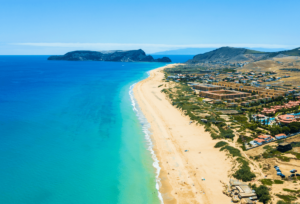As one of the world’s most biologically diverse countries, scientists have estimated that close to 4% of the Earth’s species live in Costa Rica which also harbours some of the most productive and unique ecosystems in the world. Costa Rica invites visitors of all ages to explore these vibrant habitats and see for ourselves the likes of the tiny male glass frog guarding his eggs from wasps and slow moving sloths navigating long looping vines in the canopy.
Dense tropical rainforests
Often referred to as the ‘jewels of the earth’, tropical rainforests are home to two thirds of all living species on the planet and you’ll find plenty of these gems in Costa Rica. As sunlight struggles to penetrate through the dense canopy, vegetation on the forest floor is limited, with a high percentage of all life residing in the tree tops.
You’ll find tropical rainforests filled with towering trees in the northern, Caribbean, central and southern Pacific lowlands of Costa Rica. Year-round precipitation sustains its climate and ecosystem, guaranteeing an abundant broad leaf forest full of monkeys, sloths, insects, endangered birds, lizards and a wealth of chirping tree frogs waiting to be discovered.
Magical cloud forests
Characterised by its humidity, cloud forests sit in the foggy mountainous highlands of Costa Rica, surrounding both active and dormant volcanic regions. Moisture catches on the branches of the tallest trees and drips down to the forest floor helping to support a complex ecosystem. Harbouring over 100 species of mammals, 400 species of birds and tens of thousands of insects, these cloud forests are also home to coffee and chocolate plantations and hot natural springs.
Visitors can explore this diverse environment from guided trails along the forest floor to ziplines and bridge networks above the canopy. In Monteverde National Park, look out for the brightly coloured Resplendent Quetzal, a rare bird and national treasure. Significantly cooler than their lowland counterparts, you’ll also need a sweater or light jacket in the magical highland jungles.
Recovering tropical dry forest
In the lower elevations on the North Pacific coast in Guanacaste and the Nicoya Peninsula, less dense, tropical rainforests abound. Most of this land suffered deforestation but as the land became once more protected this is quite successfully being reversed.
Created in 1989 Guanacaste National Park is incredibly diverse and you’ll find dry forests sandwiched between lowland savannah cloud forests surrounding the active Orosi and Cacao Volcanoes. Acting as a migratory passage to a multitude of species you’ll find jaguars, mountain lions, tapirs, sloths, monkeys, ocelot and a variety of migrating birds.
Mud ridden mangroves
Filled with life, the largest mangrove swamps in Costa Rica are at Terraba-Sierpe just north of the Osa peninsula but you’ll find small mangrove forests just about anywhere a freshwater river meets the sea, with some of the best found outside the resorts of Playa Matapalo and Playa del Rey. It’s not advised to visit these swamps on foot as you’ll find yourself knee deep in thick mud, but they can be easily explored by kayak.
Trees in mangroves grow in distinct layers. Varying in salt tolerance, you’ll find red, black and white mangroves whose names refer to the colour of the bark on the trees. On calm cloudy days excreted salt creates a mist around the crowns of the treetops, making the leaves of the black mangrove appear white or grey.
The trees are full of sloths, monkeys, tamadua and other mammals with mud banks crawling with caimen, black river turtles and Jesus Christ lizards.
Planning a trip to Costa Rica? Check out some of our very best deals!
https://www.holidayhypermarket.co.uk/details/22775/riu-guanacaste-hotel
https://www.holidayhypermarket.co.uk/details/44468/dreams-las-mareas
https://www.holidayhypermarket.co.uk/details/44473/riu-palace-costa-rica






